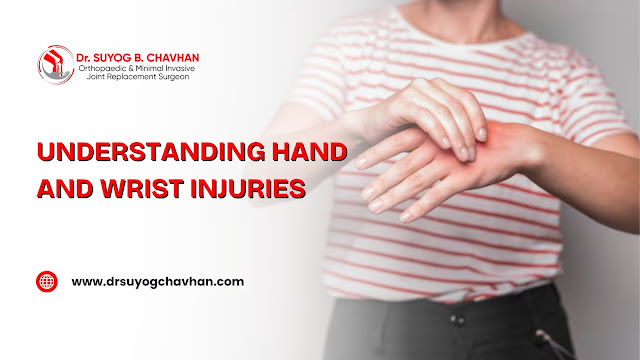Understanding Hand and Wrist Injuries: Causes, Symptoms & Treatment Options

The hand and wrist are intricate parts of the human body, enabling everything from the simplest daily tasks to complex fine motor skills. Because of their constant use, they are highly vulnerable to injuries. Dr. Suyog Chavhan , an experienced orthopaedic and joint replacement surgeon at SYNTHESIS Orthopaedics & Joint Replacement Clinic , emphasises the importance of early diagnosis and proper management to prevent long-term complications and restore optimal function. Common Causes of Hand and Wrist Injuries Hand and wrist injuries can occur due to various reasons, often linked to lifestyle, occupation, or sports. Some of the most common causes include: Falls or direct trauma : Landing on an outstretched hand or receiving a direct blow. Overuse and repetitive motion : Typing, factory work, or athletic activities like tennis. Sports injuries : Contact sports or those requiring hand strength and agility. Degenerative diseases : Conditions such as osteoarthritis or rheu...


